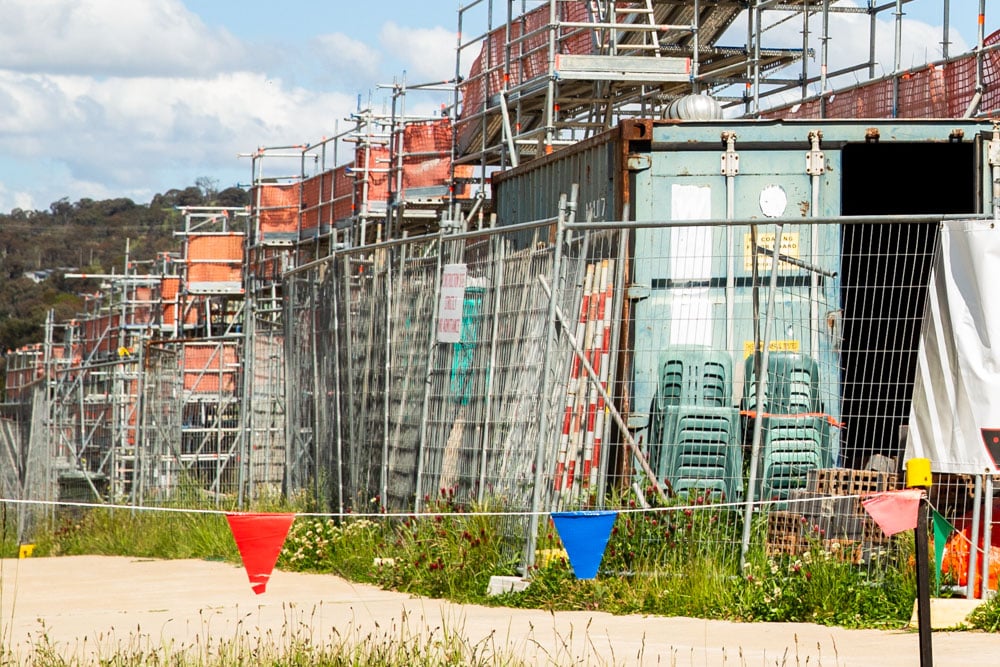Construction costs in Australia hit record highs in 2022, adding further pressure to the already heated housing industry.
According to the latest annual Cordell Construction Cost Index (CCCI) from CoreLogic, national building costs rose by 11.9 per cent over 2022 – the largest annual increase on record (excluding the period impacted by the introduction of the GST).
In the ACT, costs increased by an estimated 11.5 per cent over the course of the year, slightly lower than the national average.
ACT data
ACT construction data was not included in CoreLogic’s report, but Canberra Daily sought information from CoreLogic construction cost estimation manager, John Bennett, who was able to provide specific insight.
Mr Bennett estimates the increase in ACT construction costs in 2022 is 0.25 per cent higher than NSW, where there was an 11.1 per cent annual growth. The difference is based on factors relating to the ACT’s location, he said.
Most construction materials are nationally supplied from central locations and main regions, not locally, so the added 0.25 per cent is due to the logistics of transport and storage costs.
Mr Bennett said labour factors must also be considered, but CoreLogic’s research didn’t include labour insights for the ACT.
“[The] ACT will have a quarterly increase of approximately 1.83 – 1.85 per cent, which is slightly higher than the NSW figure and an annual growth rate of 11.5 per cent,” he said.
Mr Bennett added that the ACT is not exempt from the impact that construction costs are having on the industry nationally.
“There have been extreme periods of volatility in pricing due to restricted domestic supply chains, material and labour shortages, and although the annual CCCI remains high, on a quarterly basis we’ve recorded an easing in residential construction costs,” he said.
“This is likely to be due to a drop-off in building approvals and a pull-back from consumers and builders. This will eventually flow through to suppliers as projects are delayed or put on hold in the current economic environment.”
National data
Nationally, Australia’s construction costs blew previous records out of the water in 2022.
The 11.9 per cent annual rise was significantly higher than 2021’s 7.3 per cent. However, the December quarterly growth rate of 1.9 per cent shows an easing in the index compared to September’s quarterly increase of 4.7 per cent.
Mr Bennett said the December quarter figures reflect the impact of rising rates and high inflation, and represent the post-Covid operating period.
He also said the past 18 months to two years has been a “very challenging” period for the industry.
The main issues causing the industry grief are periods of extreme volatility in pricing due to domestic supply chains being restricted, and material and labour shortages, he said.
But there’s hope on the horizon that costs will eventually drop – while the annual CCCI remains at a record high, the December quarter reported an easing in residential construction costs.
“This reflects a pull-back from consumers, builders, and will eventually flow through to suppliers as projects are delayed or put on hold in the current economic environment,” Mr Bennett said.
The December quarter data was the lowest quarterly increase in the index since December 2021, Mr Bennett said.
What’s causing the price hike?
Although there has been a notable improvement when compared to the September figures, the rate of growth remained higher than the five-year average of 1.4 per cent.
“The biggest contributors currently are volatile timber prices, with fluctuations in structural timber costs and general increases to timber products,” Mr Bennett said.
“Prices for metal products such as gutters, lintels and fixing, used for roofing and structural purposes, continue to increase, and concrete values also remain stable.”
Additionally, the rise in the cost of petrol is affecting cartage and delivery costs, particularly concrete and larger items such as rainwater tanks.
What will 2023 bring?
Mr Bennett believes 2023 will bring a lowered growth rate to the industry than the past 18 months, but still warns consumers, builders, and suppliers to proceed with caution.
CoreLogic research director Tim Lawless said despite a substantial pipeline of residential construction works to be completed, dwelling approval figures had dropped by 41 per cent since the March 2021 historic high.
Mr Lawless said the decline in new approvals will have assisted in reducing some of the pressure on the industry.
The opening of borders and arrival of skilled workers is also expected to eventually flow into the construction industry, although a labour shortage will still remain, he said.
“Although a large number of homes remain under construction, the dwindling number of approved homes in the construction pipeline should help alleviate construction costs down the track,” Mr Lawless said.
“Anecdotally, as skilled migration continues to ramp up, we should see the costs associated with some trades and labour slow further.”
Mr Lawless said the added housing component in the Consumer Price Index, which includes rents and the costs of building a new home, was one of the main contributors to high inflation over the past few years.
“A reduction in growth associated with the cost of building a new home should gradually flow through to less inflationary pressures from the housing sector through the year,” he said.
Get all the latest Canberra news, sport, entertainment, lifestyle, competitions and more delivered straight to your inbox with the Canberra Daily Daily Newsletter. Sign up here.



